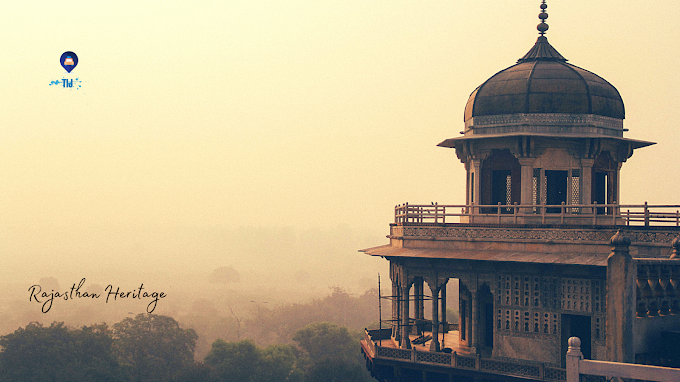Nawalgarh – To Travel Around The Miniature Town
Shekhawati: Nawalgarh
To the started, Shekhawati in Rajasthan's open craftsmanship exhibition. For the individuals who have not found out about it, Shekhawati is a term used to signify an area in northern Rajasthan including the regions of Jhunjhunu, Sikar, Churu, and Nagaur. Aside from a long and momentous history, this district has likewise created a portion of India's most popular business families – the Dalmias, they Murarkas, the Goenkas to give some examples.
Get More Information About Nawalgarh Havelies with Proper Tour with JCR Cab Services, with Booked Owned Car Rental in Jodhpur Also Provide Tempo traveler in Jodhpur. Grab Now at Reliable Prices.
Histories and Havelis
In the eighteenth and nineteenth hundreds of years, Marwari traders moved to and flourished in India's new plug places – Bombay and Calcutta. They sent the main part of their immense fortunes back to their families in Shekhawati to build fantastic Havelis – to show their neighbors how well they were doing and to repay their families for their long unlucky deficiencies. As an ever-increasing number of vendors succeeded, it before long turned into opposition to construct always amazing buildings – homes, sanctuaries, step-wells – which were luxuriously embellished, both all around, with painted wall paintings.
Haveli Arch.
Haveli dividers, especially at the passageway, in the patios and at times inside a portion of the rooms, were as often as possible painted by the starting from the earliest stage the overhang. Regularly the compositions blend delineations of the divine beings and their lives with ordinary scenes highlighting present-day developments, for example, trains and planes, despite the fact that these specialists themselves had never observed them. Thus, Krishna and Radha are found in flying motorcars and Europeans can be watched expanding tourist balloons by blowing into them, or going in trains, the compartments of which resemble English houses. On these dividers, certainty meets fiction, the famous meets the modest and in some shocking cases cash meets awful taste.
Nowadays the greater part of the Havelis are as yet possessed by relatives of the first families, however not occupied by their proprietors, for whom modest community Rajasthan has lost its appeal. Many are involved just by a solitary chowkidar (overseer), while others might be home to a nearby family. A large number of the better-realized ones have printed leaflets and booklets which give a piece of knowledge into the historical backdrop of the family and the design of the haveli being referred to. Despite the fact that they are pale impressions of when they suited the enormous family units of the Marwari trader families, they stay a captivating demonstration of the changing occasions where they were made. Just a couple Havelis have been reestablished; a lot more falsehood neglected, disintegrating gradually away.
Nawalgarh
Nawalgarh, established in 1737 by Nawal Singh is nearly at the focal point of Shekhawati. Nawalgarh is very minimal, and the vast majority of its havelis are midway found and simple to reach by walking. We began our visit from Morarka Haveli which is a valid statement to begin your visit as most aides (you will require one) gather here. It would be ideal if you recall that most havelis have singular tickets .
Understanding the Haveli
Haveli is a Persian word that signifies 'an encased space'. However, in opposition to its strict importance, the design of the haveli did substantially more than essentially encase space; it in actuality gave a thorough framework that represented the regular daily existences of its occupants.
Most Havelis are entered through a huge curved passage, secured by a strong wooden entryway. While a large portion of the occasions the bigger entryway is bolted, a littler gateway cut inside the bigger entryway permits individuals into the first of the numerous patios. This external patio is known as the mardana (men's yard). As a rule, on one side of the mardana is a baithak (salon) in which the shipper of the family unit could get his visitors. So as to intrigue guests, this room was commonly the most intricately made and frequently highlighted marble or fake marble dividers. Here, you'll as often as possible see pictures of Ganesh, divine force of riches and favorable luck. The baithak, for the most part, came furnished with a physically worked punkah (material fan). Inverse the baithak is frequently a stable and mentor house, called Nora for obliging camels, ponies or elephants. A turn of the century carport, maybe.
Zenana ( Ladies' Patio ).
A divider isolates the external mardana from the inward zenana (ladies' patio). Between the two patios, there was regularly a little latticed window, through which they could peep out at male visitors. Some of the time, there was likewise a screened-off overhang, known as the duchatta, over the mardana for them to keep an eye on procedures. Section into the internal yard was limited to ladies, relatives and, at times, advantaged male visitors.
The zenana was the principle household field. Rooms off this patio filled in as rooms or storerooms, and staircases prompted exhibitions on upper levels, which for the most part involved rooms – some of which were roofless, for hot evenings. The yard game plan, together with thick dividers, gave a lot of shade to cool the internal rooms, a crucial need right now land. The haveli accordingly gave everything to the ladies and there was no requirement for them to wander into the outside world – and in Shekhawati, these were astoundingly plated confines.
Don't Worry About your Family there are lots of Services available in JCR you Can Easily Book your Tempo Traveler In Jodhpur For your Families and Friends.






0 Comments